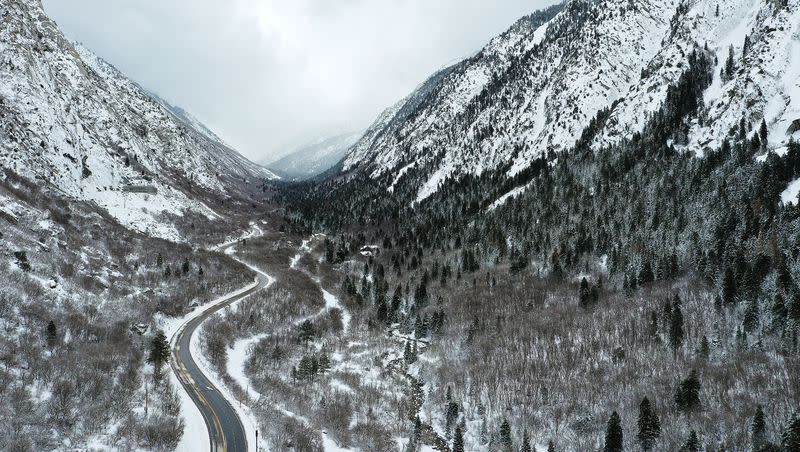Salt Lake dubs emergency ski transit service a 'success.' Here's how many used it

A 12-week emergency shuttle service option for the ski resorts in Salt Lake County was a "success," Salt Lake County Mayor Jenny Wilson said Wednesday.
In all, the Cottonwood Connect brought in 9,007 riders to and from the ski resorts in Big and Little Cottonwood canyons — 83% of whom were out-of-state residents, according to Visit Salt Lake, the private nonprofit organization that promotes county tourism.
"The success of the Cottonwood Connect demonstrates the willingness of skiers and snowboarders to try commonsense solutions to our traffic problems in the canyons," Wilson said in a statement. "I'm thrilled to see that the first season of this experiment was a success and am excited to continue to grow solutions that allow people to enjoy the canyons without adding to the traffic."
Salt Lake County, Visit Salt Lake and Utah Transit Authority, as well as Alta, Brighton, Snowbird and Solitude resorts, came to an agreement on a plan for Cottonwood Connect in January after UTA's employment shortage caused it to cut its ski bus service in half this winter. The county approved nearly $240,000 to tack onto the public-private partnership.
Snow Country Limousine operated a shuttle service on Thursdays, Fridays, Saturdays and Sundays from Jan. 26 through April 16 with riders paying $10 for a round trip. Visit Salt Lake officials said a series of canyon closures during nearly half of the transit service weekends cost almost 2,000 additional riders.
UTA's ski bus service also fared strongly despite the cutbacks this season. For example, this season's highest ridership point — 3,531 average weekday boardings across all ski bus service areas in Feburary — was its fourth-highest month since 2017, according to UTA data. That doesn't even take into account weekends, which have become increasingly busier for the agency in recent years.
Kaitlin Eskelson, president and CEO of Visit Salt Lake, attributes the traffic from both services to Utah's record-breaking snowfall, which brought more than 900 inches to some parts of the Cottonwood canyons.
"With a record-breaking snow year and record ski visitation, we were excited to work with our partners to create solutions to alleviate congestion in Big and Little Cottonwood canyons," she said. "Visitors, locals and resort employees all benefited from this innovative micro-transit partnership."
It's unclear if Cottonwood Connect will be around next year, especially because UTA leaders are hopeful that they will not have to slash service again next season.
In a KSL-Deseret News editorial boards meeting last week, Carlton Christensen, chairman of the agency's board of trustees, said he believes a new collective bargaining agreement will "help" the situation.
"It's certainly holding us back in being able to add more service," he said.

